Hydrangeas are extremely popular, and well loved, flowering shrubs. With 6 main species of hydrangeas, there is a perfect selection for any garden. From full sun to deep shade, dwarf varieties and tree forms these loved shrubs truly fit any style or size of garden.
The flowers on hydrangeas are their claim to fame. Ranging from huge ball shaped white flowers to deep red panicles it is easy to see why. The beautiful blue mop-heads are likely responsible for their boom in popularity. If it isn’t their beauty that captivates you it may be how easy they are to care for. Not many plants out there can provide such a major impact to your garden with such minimal work.
While hydrangeas are cold tolerant in many areas, there are still some precautions you can take to ensure that your hydrangea will survive the winter with grace.
Know Your Species
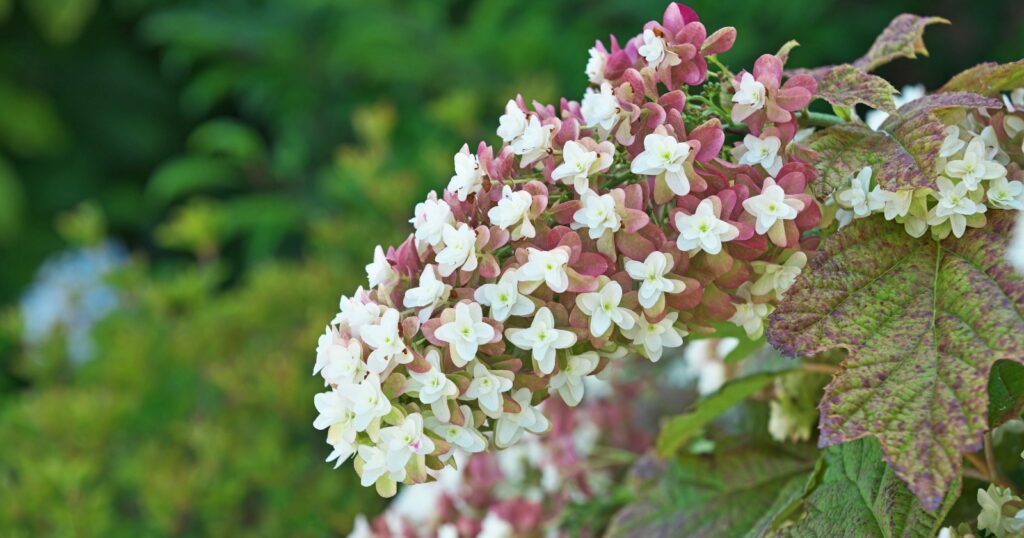
Before you get started, make sure you have a good idea of what type of hydrangea you are growing in your gardens. The different species of hydrangeas have some different care requirements that could make a difference in their performance next season.
The 6 main species of hydrangeas are:
- Hydrangea anomala, or climbing hydrangea
- Hydrangea arborescens, or smooth hydrangea
- Hydrangea macrophylla, or bigleaf hydrangea
- Hydrangea paniculata, or panicle hydrangea
- Hydrangea quercifolia, or oakleaf hydrangea
- Hydrangea serrata, or mountain hydrangea
If you have misplaced your plant tag, or inherited your shrub a quick google search should at least get you on the right track.
Water Until The Ground Freezes
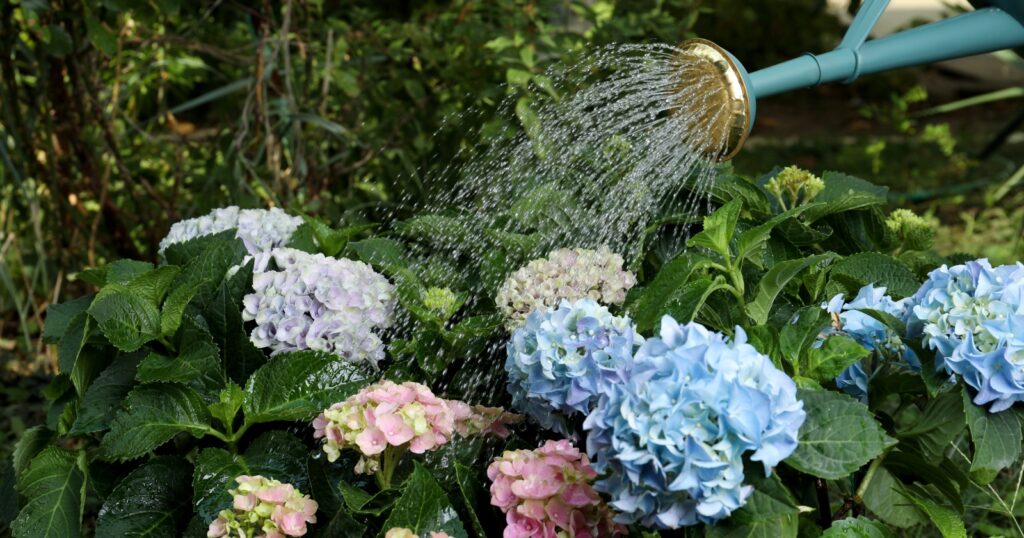
It is really important to keep watering your hydrangeas until the ground freezes. These shrubs, as we all know, are water lovers. Keeping them well hydrated will help them survive the winter winds with grace.
In the height of summer, hydrangeas need at least one inch of water per week. As we head into the winter you can ease up on the extra watering, and slowly decrease the amount of water your hydrangeas receive. This weaning off will help prepare them for the long winter with little available water.
Once the ground is frozen the water will not be available to the roots of the plant and you can hold off on watering again until the ground thaws in the spring. Hydrangeas that aren’t watered adequately can suffer from wilting, drooping, and even death if neglected for long enough.
Compost For Additional Nutrition
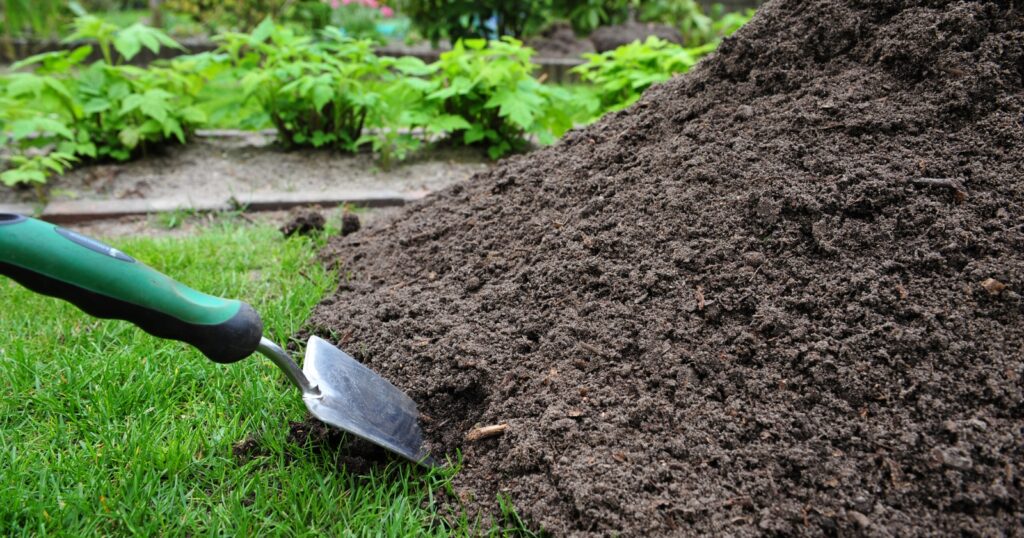
Fertilizing in the fall is not ideal for hydrangeas. It can push growth which will not have enough time to harden off before the fall frost arrives. If you would like to give your plants a bit of a boost, composting your gardens is a great option.
Compost is readily available at garden centers, but you can also find it at your local landscape supply company and sometimes at nearby farms. Whichever option works for you will work for your garden.
You can spread compost throughout your entire flower bed, or you can just apply it around each plant. This application will provide your hydrangeas with good nutrition to get through the winter.
Mulch For Root Protection
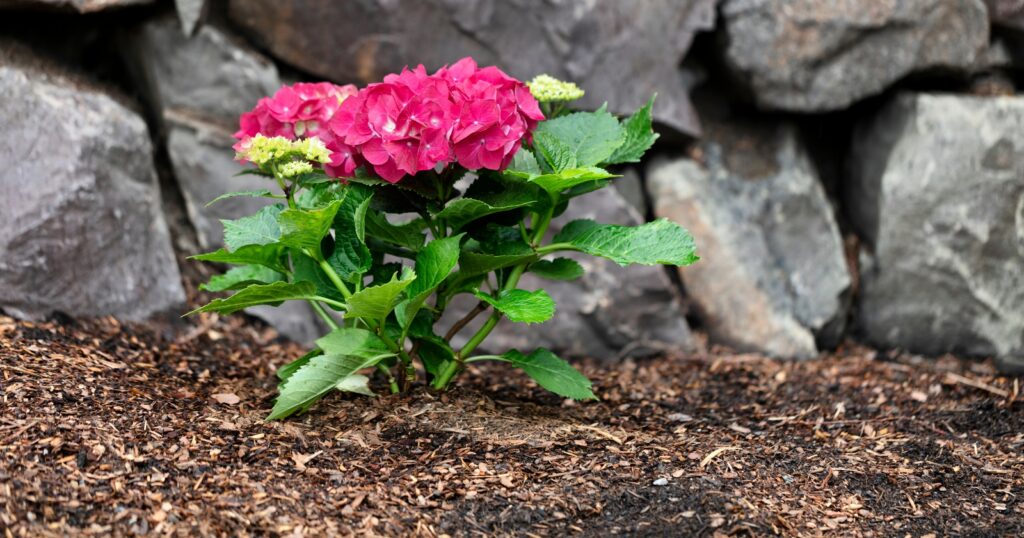
Mulch can serve many purposes in your gardens. It helps keep weeds away, it beautifies your flower beds instantly, it helps your soil retain moisture, but mulch also protects your roots.
Hydrangeas are perennials in most hardiness zones. And like many other perennials, need some cold weather to properly go into dormancy. In the winter, the purpose for mulch is to keep the soil temperature consistently cool, while protecting the roots from the sun. This temperature control is what helps the hydrangeas stay dormant.
If hydrangeas roots are exposed to a streak of warm temperatures the shrubs may begin to produce new growth which, in the middle of the winter, would probably not hold up well to the late winter chill.
Use Protective Coverings
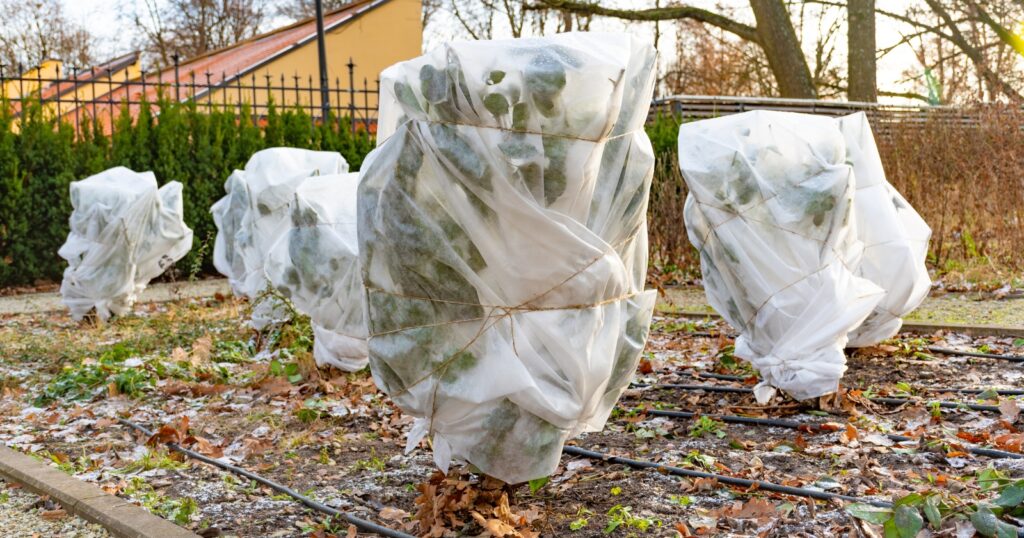
Depending on where you live, and how cold and windy your winters may be, you may want to consider wrapping your shrubs with burlap or a plant bag. This extra layer of protection can keep your buds safe from frost bite, it can also help to protect them from being nibbled by critters.
When you are wrapping the burlap around your plant, be gentle and try to avoid too much contact between the fabric and the plant’s buds. This will help to prevent too much rubbing which could result in the buds falling off. Secure your burlap with garden twine.
If you are not up for the task of wrapping your shrubs, you can purchase plant bags which come in a variety of sizes. These are simple to put over your plant and secure with the provided tie.
Consider Your Plant Location
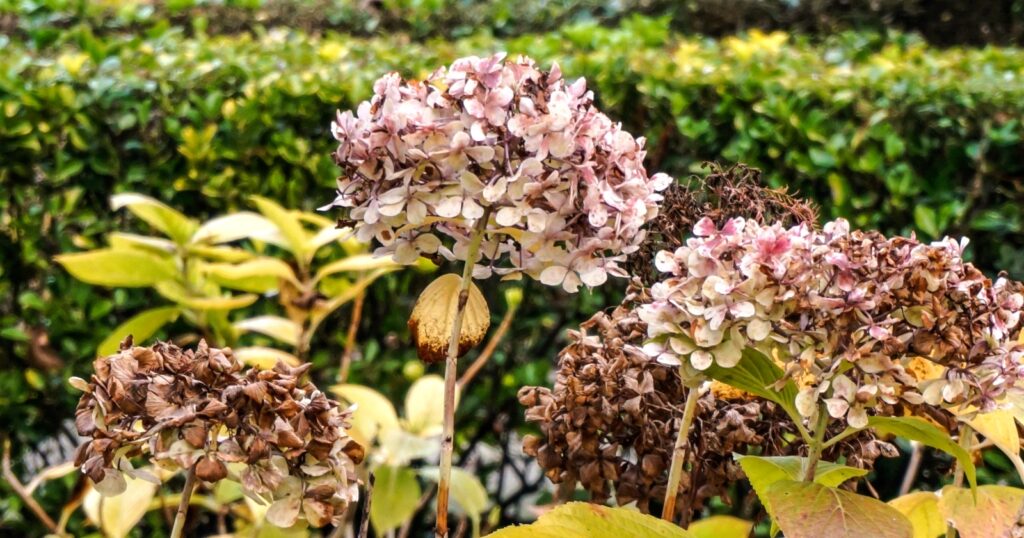
Something that hydrangeas can struggle with over the winter is the chilly winter winds. Even though wrapping your plants in burlap can help keep your hydrangeas protected from the winds, sometimes it is better to move the plant to an area where the winds are not so harsh.
Transplanting your shrubs is best done in the fall with at least a few weeks left before your average frost date. This will help the shrub to take up as much water as possible. You will need to be vigilant about watering until the ground is frozen to ensure a strong start to the spring.
If you are too late to move your hydrangea, you can try to prune some nearby branches off of trees or other plants. Another option is simply to make plans for the spring, and move your hydrangea (or prune it) when the weather warms up.
Watch Your Pruning
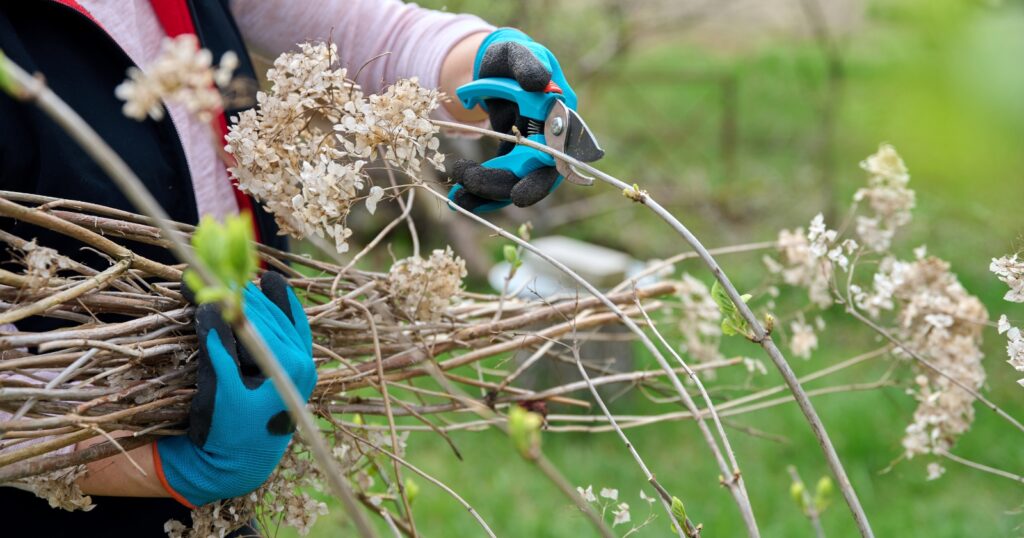
If you have determined what type of hydrangea you are growing in your garden you will be well on your way to figuring out when or if you should prune your hydrangeas.
Hydrangea macrophylla or Hydrangea quercifolia need to be pruned just after blooming ends to make sure that you are not pruning away any of the new flower buds. The good news is that these shrubs rarely need to be pruned, aside from removing dead or damaged branches.
If you are growing any other type of hydrangea you are safe to prune in the fall or the spring. There are benefits to pruning at either time.
Pruning in the fall will help to neaten your garden, prevent major breakage and damage from the weight of snow, and ease up your to-do list come spring. Waiting until the spring will keep your garden full of interest all winter, as well as providing a home for wildlife.
Take Care of Your Climbers
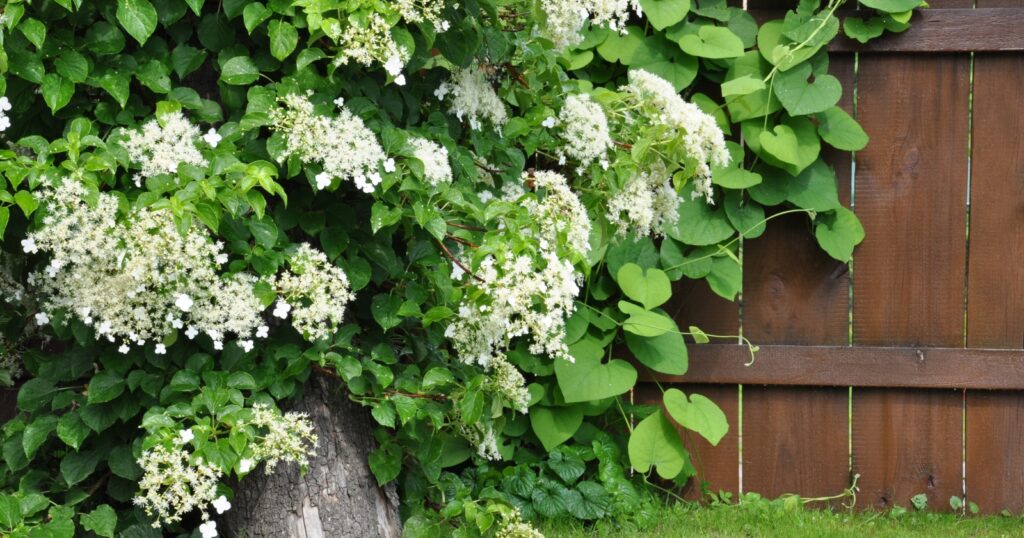
Your climbing hydrangeas may be more exposed to the elements than the rest of your hydrangeas. Depending on how tall they are, they may not get much of a break from wind or sun. Take its exposure into consideration and think about wrapping your climbers with burlap.
Before you do that, this is a good time to adjust any plant ties you may be using. I like to use velcro strips with my climbing hydrangeas. It allows me to move them around and loosen them easily. Take a look and see if your plant needs a bit of extra support, and add a tie or two if needed!
Make Sure There’s Enough Space
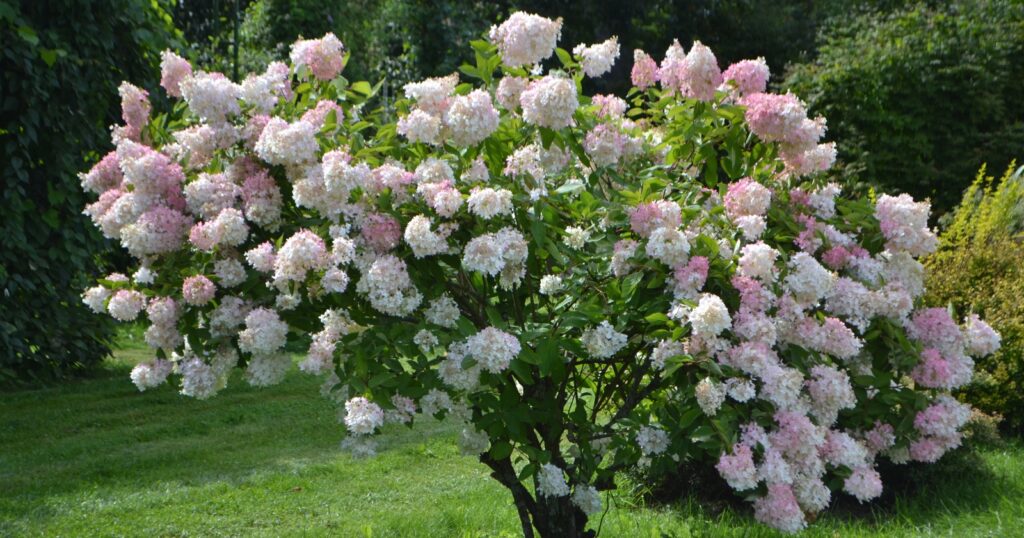
Has your hydrangea grown bigger than you expected? This is a good time to prune some shrubs that are growing near your hydrangea, or to transplant your large hydrangea.
If you are not sure how big your hydrangea will get, do some research! As long as you know what species of hydrangea you have in your garden you should be able to get a pretty good idea even though size can still vary within species.
When you plant your hydrangeas, it is a good idea to leave enough space for the full size of the hydrangea. This will allow the shrub to grow properly as well as eliminate fungal diseases by increasing air flow in between plants.
Amend Your Soil Profile
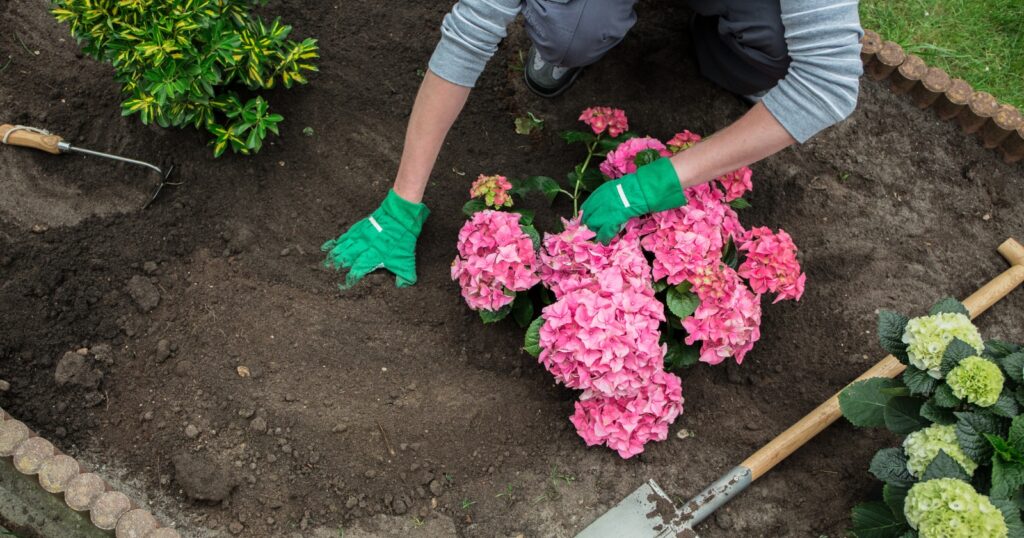
The fall is a great time to amend your soil if you want to change the color of your hydrangea flowers. Hydrangea macrophylla are sensitive to the pH of your soil. This sensitivity is reflected in the color of the flowers.
If you are seeking blue flowers, you will want to lower your pH to 5.5 or lower. Aluminum sulfate is the product you will want to use for this, however it is only recommended to be applied in the spring. Fall is a good time to take a pH reading of your soil so you can prepare for the spring.
On the contrary, if pink flowers are your goal you will want to raise your soil pH to 6.5 or above. October is a great time to apply some garden lime to your soil. Be prepared to apply the garden lime again in April!
Protect Hydrangeas From Wildlife
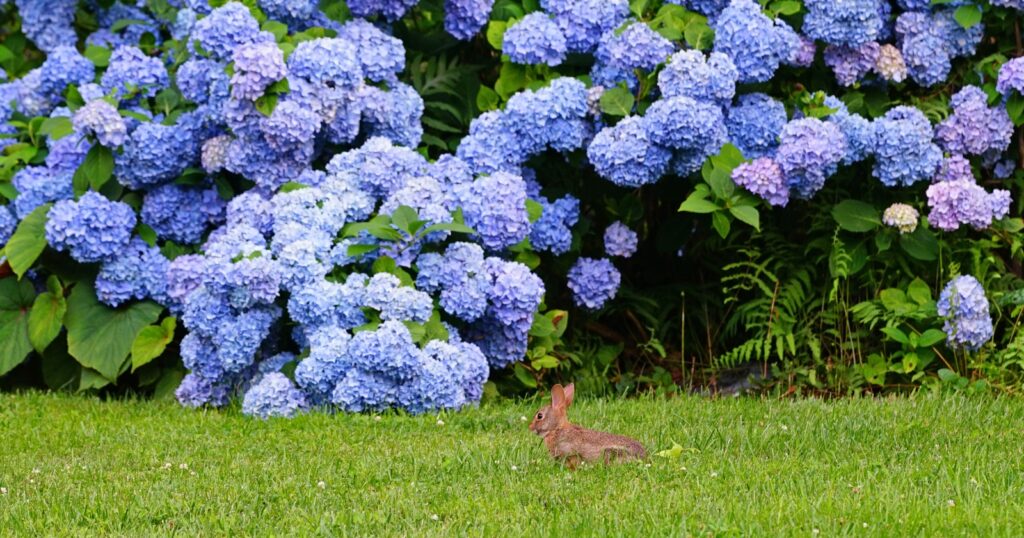
If you are regularly having run-ins with critters, you may want to consider taking a few steps to protect your hydrangeas from getting nibbled on over the winter.
You can use a deer net, which is a fine black netting, to protect your hydrangeas from getting eaten. This net works for most critters as well as birds. Simply drape the net over your plant and stake it to the ground. Usually the nets will come with stakes when you purchase them. If it doesn’t, you can use rocks or any other garden stakes to keep it in place.
There are also many spray products on the market that will work wonders at keeping deer and other critters away. These sprays work by deterring animals with a strong odor. You will need to reapply these sprays every few weeks. To accurately apply these products be sure to read the label on the bottle!
Don’t Neglect Potted Hydrangeas
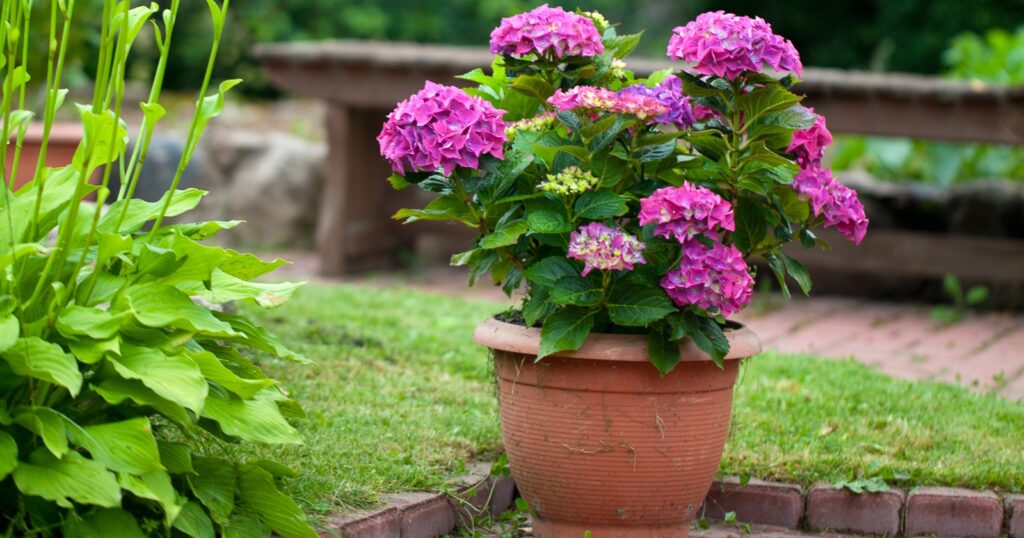
If you have been growing your hydrangeas in containers, this is the time to move them indoors or to a more protected area. The danger here is the roots freezing because they are above ground and will be dealing with much colder temperatures than if they were buried in the soil.
You have a couple options here. The quickest and easiest is to move the pot into your garage, or a shed. This will allow the plant to still experience some of the cold that is required for the plant to go through its normal dormancy.
The other option is to bury the pot. If you have the room in your yard you may opt to dig some holes and sink the planted containers into the ground. You will want to cover the pots and the top of the soil in the pot with leaves or mulch.
Weed Your Garden
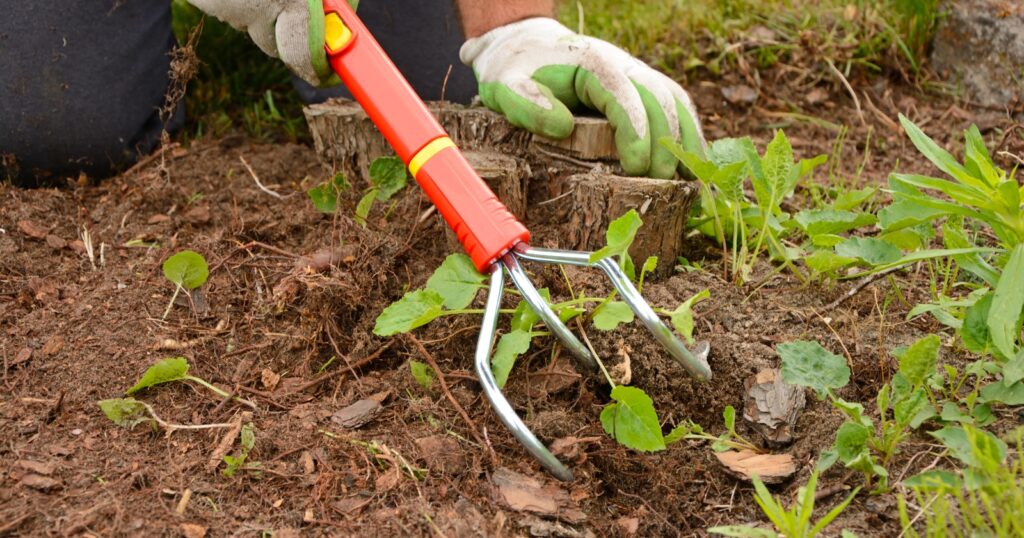
Once you have cleaned up your gardens, and removed all of the leaves it is always a good idea to give your garden one last weeding. Those little guys suck up a lot of water that the hydrangeas could be drinking. They are also about to set seed which will overwinter in the soil in your garden.
Try to get to this task before a frost comes to your area because these tender greens will tend to die back quickly after a cold blast. If you pull these weeds you will decrease the amount of weeds that will germinate in your garden in the springtime. So take a few minutes to pull those weeds!
Treat For Pests One Last Time
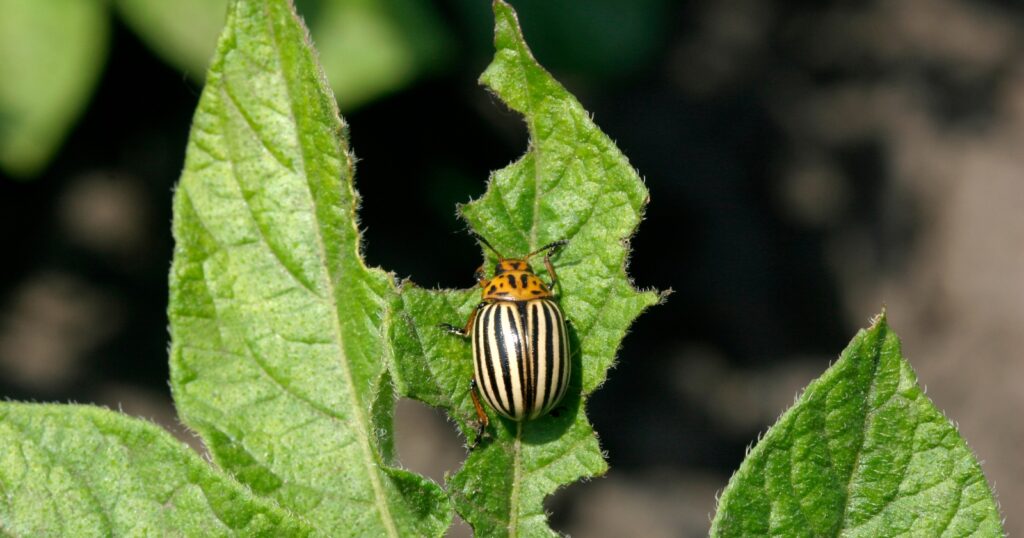
If you had any insect infestations over the summer, give your hydrangeas one last application of horticulture oil or other chemical free pesticide. This will help to get rid of any stragglers, and set you up for a good start in the spring.
If you have an insect that has laid eggs on your hydrangea, those eggs will hatch when the weather warms and they will begin to feast on your fresh plant leaves or buds. That is no way to start your pretty hydrangea season.
I know I sound like a broken record but clearing out any leaves or branches that may be heavily infested is the best way to keep your shrubs healthy.
Check and Treat Diseases Routinely
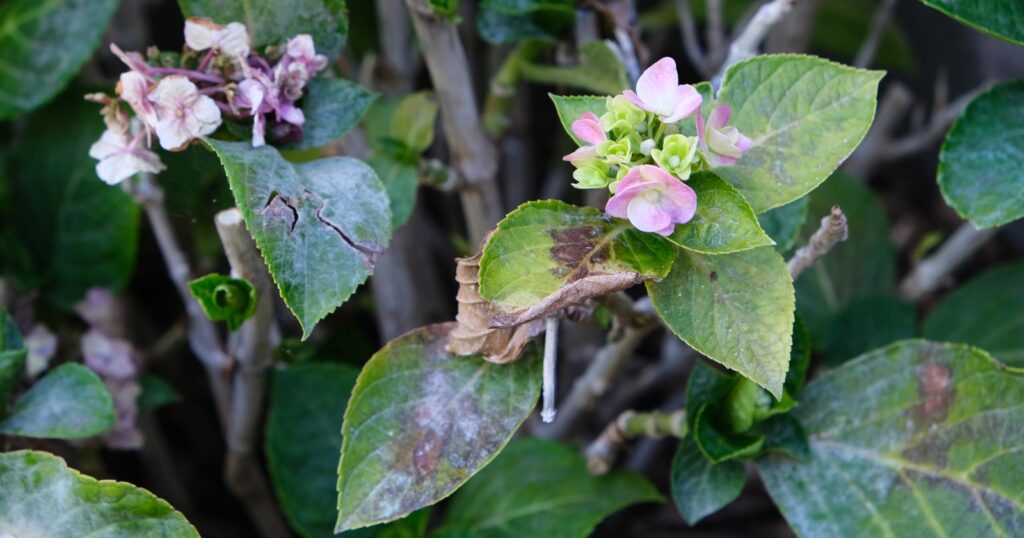
Similarly to treating insect infestations, you will want to give your hydrangeas one last spray for diseases before you put them to bed for the winter. Hydrangeas are susceptible to fungal diseases. This is mainly because they grow in the shade, and it can get damp and humid in these areas over the summer. Even though the air has cooled, there could still be plant material with fungal spores lingering in your flower beds.
One last spray before the winter hits will help to rid any remaining spores from your garden. Don’t forget to remove any plant material from the base of the plant and surrounding area that could be harboring these nasty spores.
Consider Anti-Desiccant
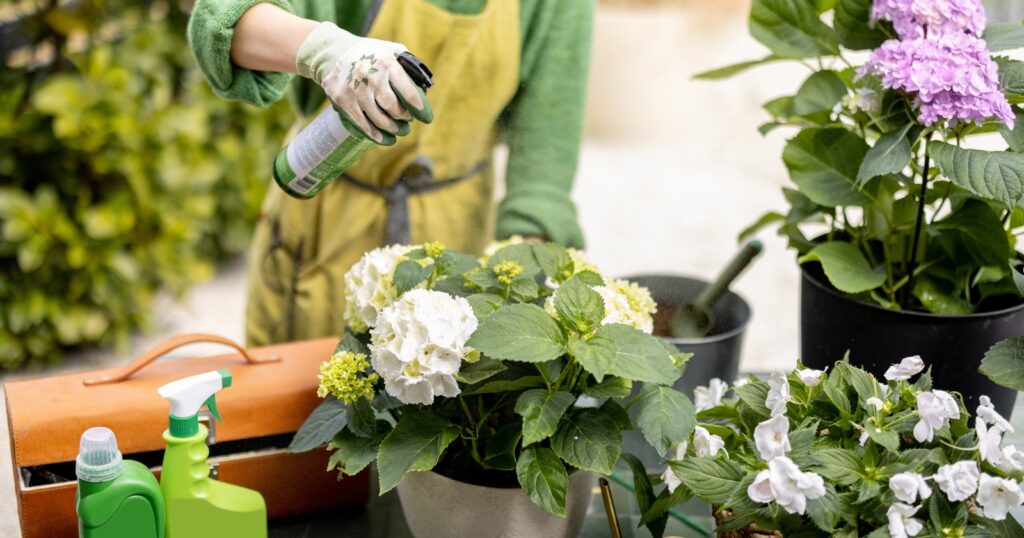
Anti desiccants are commonly used on evergreen plants, however they can benefit hydrangeas as well. This is a product that is sprayed onto the plant and it will help to keep your plant from drying out in the winter sun and winds.
Anti-desiccant products are available online as well as at garden centers. They will need to be applied a few times over the winter, be sure to follow label instructions. Applying an anti-desiccant will be especially helpful in newly transplanted hydrangeas that may struggle with water loss over the winter.
Get Planning!
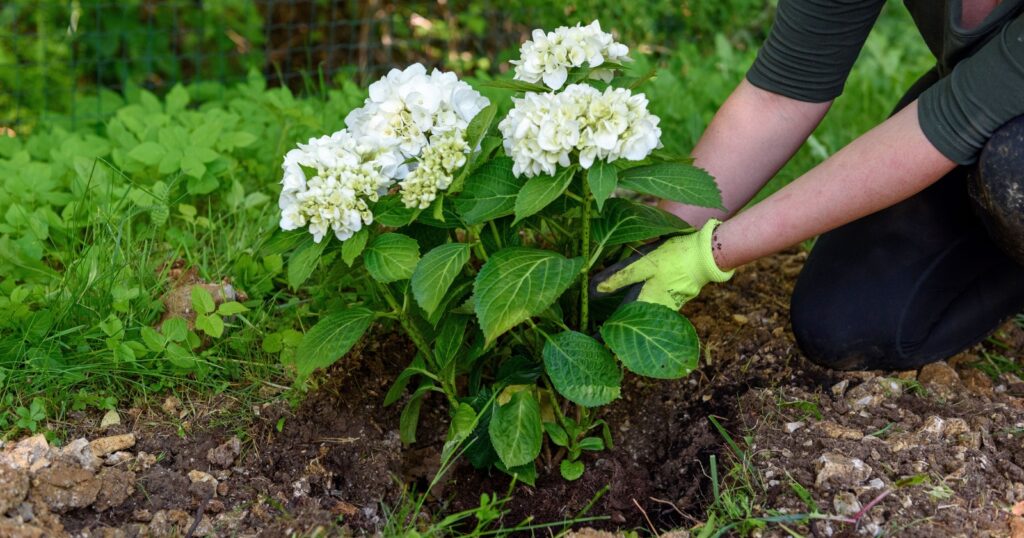
The winter is a great time to reflect back on your garden. What would you do differently? What challenges did you face? And what is on your wish list for the next season, or many seasons to come?
Take the months off to make shopping lists for new products you may want to try on your hydrangeas, as well as new hydrangea varieties you want to try! Making a timeline for your hydrangea care for the next year is a great way to set yourself up for success!
Final Thoughts
If you live in an area where hydrangeas are hardy, you should have very few issues with them over the winter. Maintaining good gardening habits all year long, such as keeping your gardens clean of litter and ensuring that your hydrangeas are getting enough water will result in very strong plants.
However, taking some extra steps to properly care for your shrubs will ensure that your beautiful hydrangeas make a happy return in the spring.

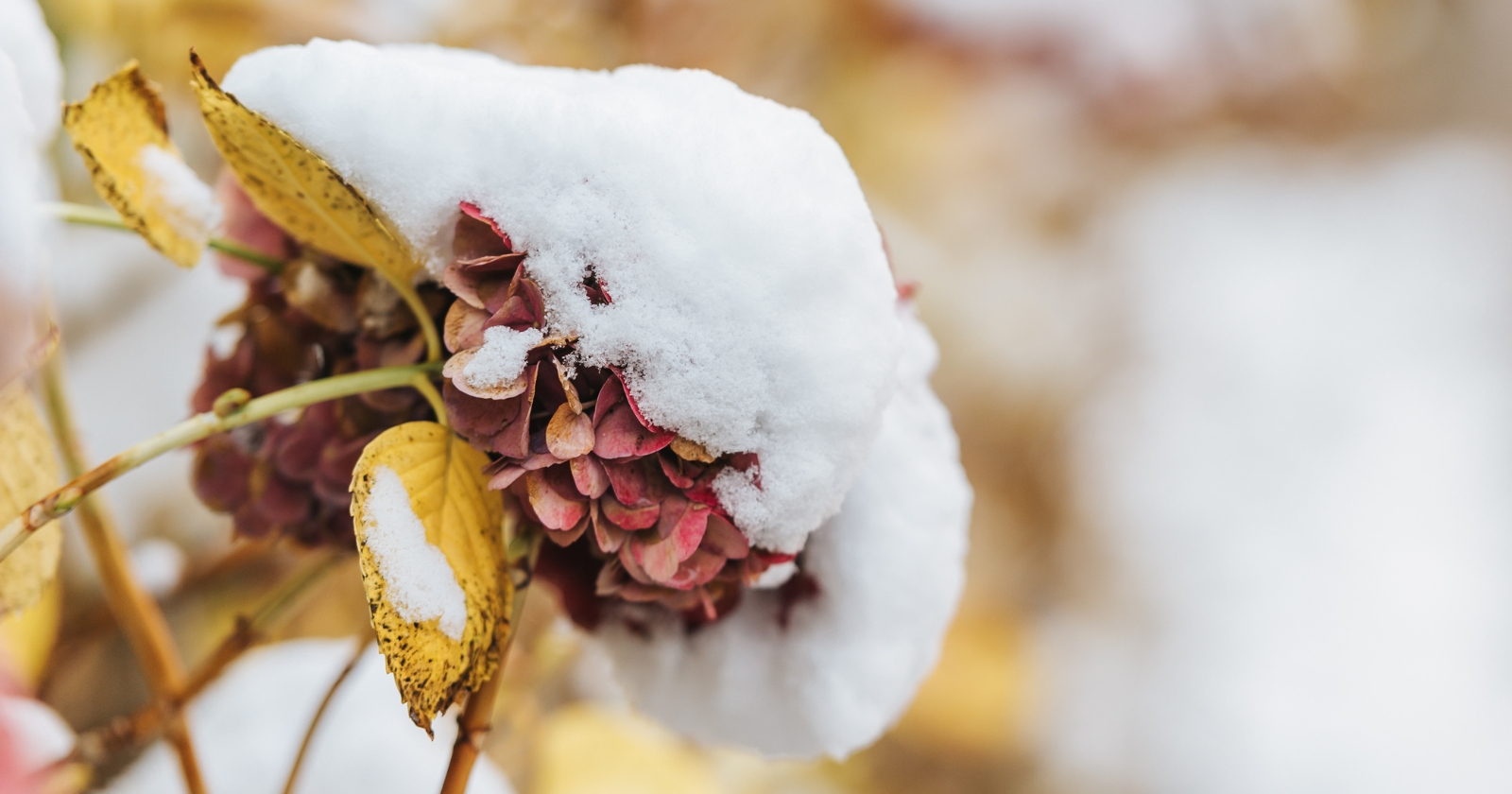
Leave a comment